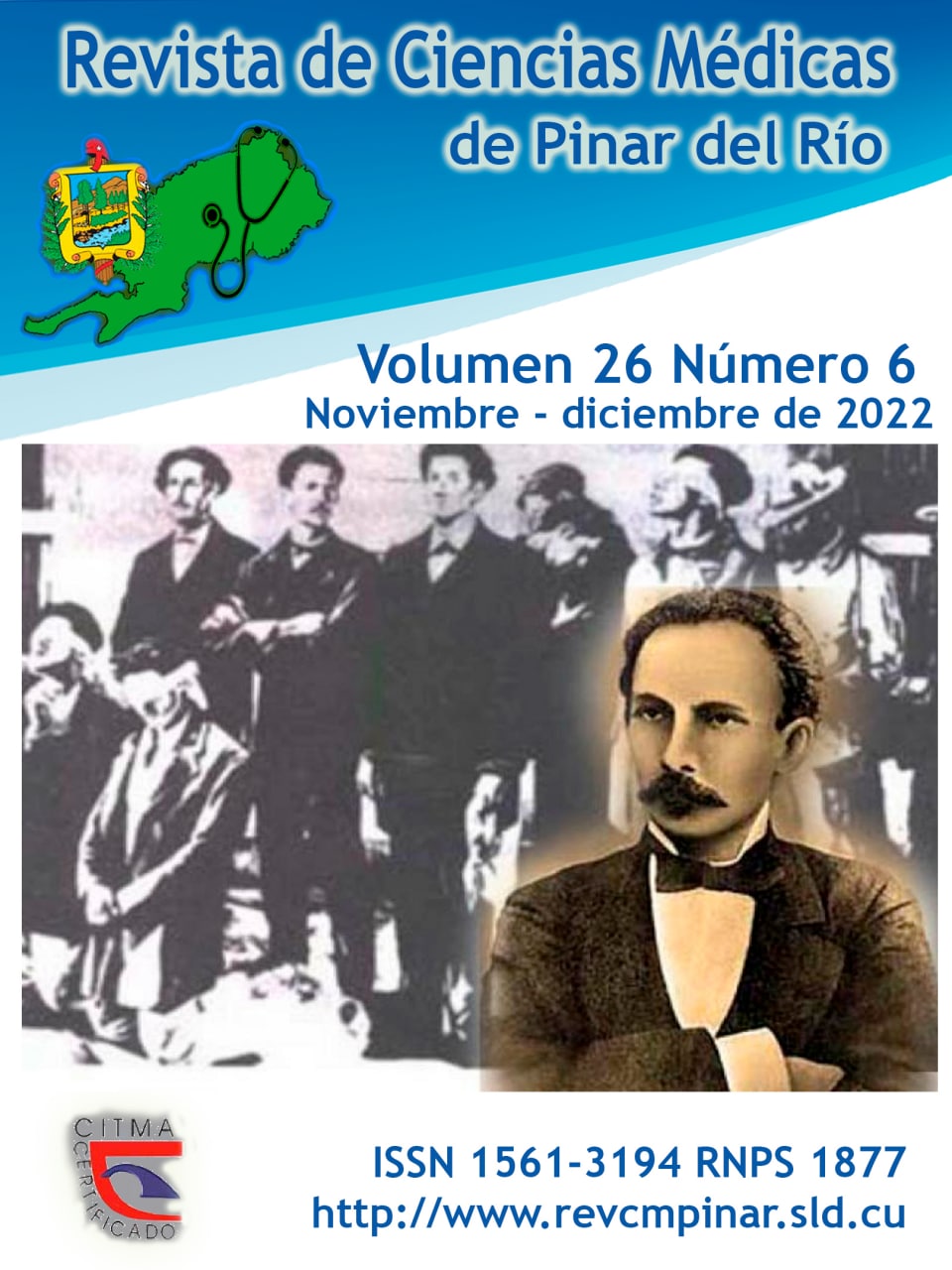Acute tubulointerstitial nephritis due to cephalexin. Apropos of a case
Keywords:
ACUTE KIDNEY INJURY, NEPHRITIS, INTERSTITIAL, CEPHALEXIN, BIOPSY.Abstract
Introduction: acute tubulointerstitial nephritis refers to a type of renal damage that mainly affects the interstitium and causes potentially reversible acute injury. Its course may be subclinical or with progressive deterioration, until it evolves into chronic renal disease. Its management includes the suspension of the responsible drug and the use of steroids when the condition is of drug or autoimmune origin. If identified in a timely manner and adequately treated, its prognosis is generally favorable.
Case presentation: we report a young patient with a history of good health, who after a stomatological procedure received treatment with oral cephalexin for seven days and developed acute tubulointerstitial nephritis clinically and histologically proven that responded satisfactorily to the usual treatment of the disease, which indicates the need to take into account its possibility, even in usual clinical situations, and increase the knowledge of medical professionals about this disorder that can even be a cause of chronic kidney disease and avoid the use of antibiotics when they are not a strict necessity.
Conclusions: acute tubulointerstitial nephritis is a complication that may be present after the use of cephalosporins, including those of the first generation administered orally, in the treatment of common diseases with a favorable prognosis.
Downloads
References
1. Nieto-Ríos JF, Ruiz-Velásquez LM, Álvarez L, Serna-Higuita LM. Nefritis túbulo intersticial aguda. Revisión bibliográfica. Iatreia[Internet]. 2020 [citado 20/08/2021]; 33(2): 155-166. Disponible en: https://revistas.udea.edu.co/index.php/iatreia/article/view/339466/20802362
2. Perazella MA. Drug-induced acute kidney injury: diverse mechanisms of tubular injury. Curr Opin Crit Care[Internet]. 2019 Dec [citado 20/08/2021]; 25(6): 550-557. Disponible en: https://pubmed.ncbi.nlm.nih.gov/31483318/
3. Kwiatkowska E, et al. The Mechanism of Drug Nephrotoxicity and the Methods for Preventing Kidney Damage. Int J Mol Sci [Internet]. 2021 [citado 20/08/2021]; 22(11): 6109. Disponible en: https://pubmed.ncbi.nlm.nih.gov/34204029/
4. Clavé S, Rousset-Rouvière C, Daniel L, Tsimaratos M. Acute tubule interstitialnephritis in children and chronic kidneydisease. Arch Pediatr[Internet]. 2019 Jul [citado 20/08/2021]; 26(5): 290-294. Disponible en: https://www.sciencedirect.com/science/article/abs/pii/S0929693X19300909
5. Cephalexine. Up To Date (Pediatric drug information) [base de datos en Internet]. Waltham, MA: Wolters Kluwer Health Clinical Solutions[Internet]; 2020 [citado 20/08/2021]. Disponible en: www.uptodate.com
6. Kefloridina. Fichas técnicas del Centro de Información online de Medicamentos de la AEMPS-CIMA [base de datos en Internet]. Madrid, España: Agencia Española de Medicamentos y Productos Sanitarios (AEMPS) [consultado el 27/07/2020]. Disponible en: https://cima.aemps.es/cima/dochtml/ft/51115/FT_51115.
7. Herzog AL, Lopau K. Interstitielle Nephritis [Interstitial nephritis]. Internist (Berl) [Internet]. 2019 Aug [citado 20/08/2021]; 60(8): 821-839. Disponible en: https://pubmed.ncbi.nlm.nih.gov/31286163/
8. Caravaca-Fontán F, Fernández-Juárez G, Praga M. Acute kidney injury in interstitial nephritis. Curr Opin Crit Care[Internet]. 2019 Dec [citado 20/08/2021]; 25(6): 558-564. Disponible en: https://pubmed.ncbi.nlm.nih.gov/31503026/
9. Ruebner RL, Fadrowski JJ. Tubulo interstitial Nephritis. Pediatr Clin North Am[Internet]. 2019 Feb [citado 20/08/2021]; 66(1): 111-119. Disponible en: https://www.pediatric.theclinics.com/article/S0031-3955(18)30133-0/fulltext
10. Perazella MA. Clinical Approach to Diagnosing Acute and Chronic Tubulo interstitial Disease. AdvChronicKidneyDis [Internet]. 2017 Mar [citado 20/08/2021]; 24(2): 57-63. Disponible en: https://doi.org/10.1053/j.ackd.2016.08.003
11. Roy S, Awogbemi T, Holt RCL. Acute tubule interstitial nephritis in children- a retrospective case series in a UK tertiary pediatric centre. BMC Nephrol[Internet]. 2020 Jan [citado 20/08/2021]; 21(1): 17. Disponible en: https://doi.org/10.1186/s12882-020-1681-7
12. Fernández GM, et al. Nuevos retos en las nefritis túbulo intersticiales inducidas por fármacos. Nefrologia (Engl Ed) [Internet]. 2019 [citado 20/08/2021]; 39(4): 339-342. Disponible en: https://doi.org/10.1016/j.nefro.2019.02.003 .
13. Morales-Alvarez MC. Nephrotoxicity of Antimicrobials and Antibiotics. Adv Chronic Kidney Dis [Internet]. 2020 [citado 20/08/2021]; 27(1): 31-37. Disponible en: https://doi.org/10.1053/j.ackd.2019.08.001.
14. Surendra M, Raju S, Chandragiri S, Uppin MS, Raju N. Steroid therapy in drug induced acute interstitial nephritis- Retrospective analysis of 83 cases. Saudi J Kidney DisTranspl[Internet]. 2019 Jan-Feb [citado 20/08/2021]; 30(1): 157-165. Disponible en: https://pubmed.ncbi.nlm.nih.gov/30804277/
Downloads
Published
How to Cite
Issue
Section
License
Authors who have publications with this journal agree to the following terms: Authors will retain their copyrights and grant the journal the right of first publication of their work, which will be publication of their work, which will be simultaneously subject to the Creative Commons Attribution License (CC-BY-NC 4.0) that allows third parties to share the work as long as its author and first publication in this journal are indicated.
Authors may adopt other non-exclusive license agreements for distribution of the published version of the work (e.g.: deposit it in an institutional telematic archive or publish it in a volume). Likewise, and according to the recommendations of the Medical Sciences Editorial (ECIMED), authors must declare in each article their contribution according to the CRediT taxonomy (contributor roles). This taxonomy includes 14 roles, which can be used to represent the tasks typically performed by contributors in scientific academic production. It should be consulted in monograph) whenever initial publication in this journal is indicated. Authors are allowed and encouraged to disseminate their work through the Internet (e.g., in institutional telematic archives or on their web page) before and during the submission process, which may produce interesting exchanges and increase citations of the published work. (See The effect of open access). https://casrai.org/credit/



